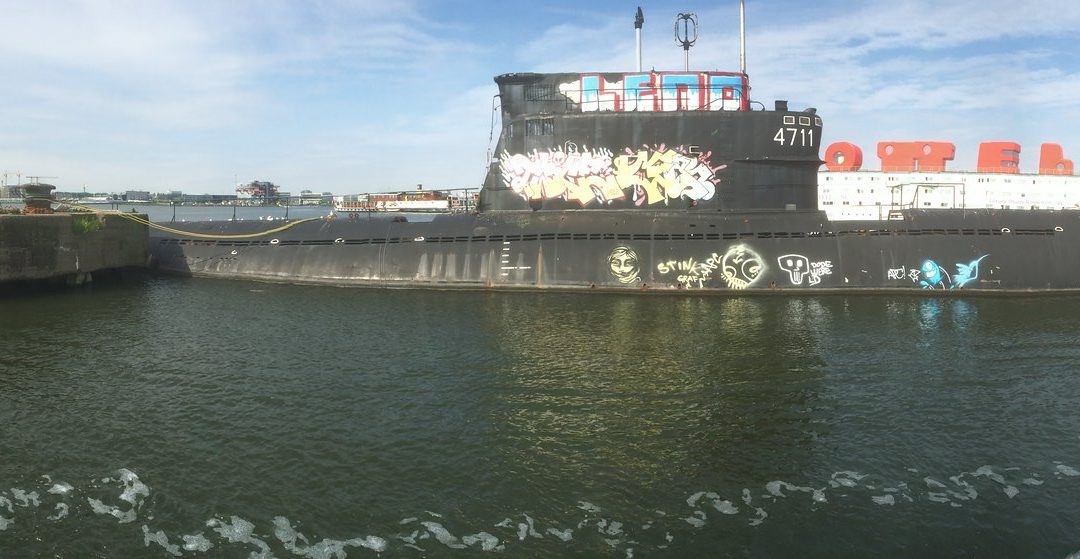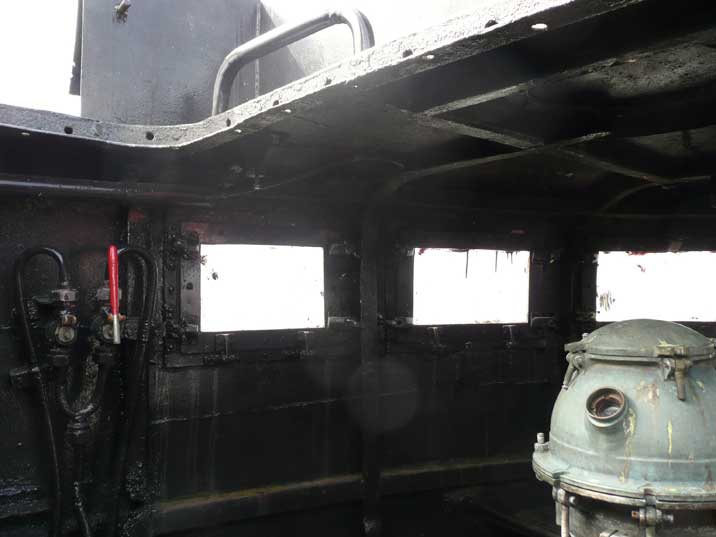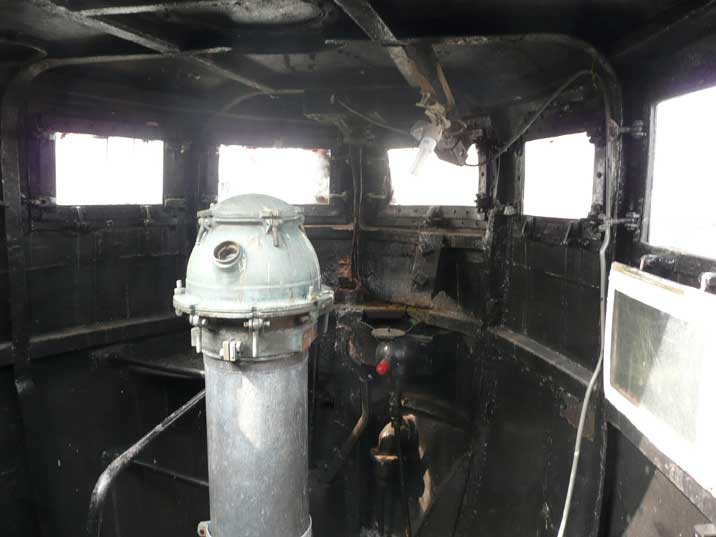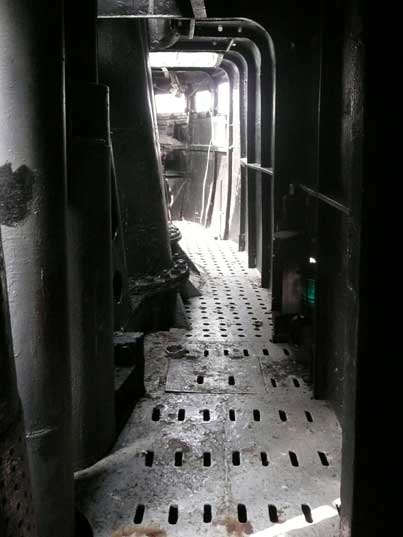With the conclusion of the Great patriotic war (World War Two), the allies set about rounding up all the advanced technologies the Germans had developed.
What the allies acquired in terms of Naval technology was leaps and bounds ahead of anything the allies had during the war and in truth, some of that technology remains in service to this day.
The most advanced German submarines those being Type XXI (Pictured) and Type XXIII became the model on which all major navies emulated in the first generation of post-war submarines and most importantly the shape of things to come.
With most of the Soviet economy geared towards producing nuclear weapons after 1945, little funds were appropriated to build new vessels until 1948-49, thus Project 611 while design started as early as 1946 they didn’t enter production until 1950. The first boat B61 did not enter service until 1952.
With NATO formed in 1949, the idea came about to track each platform and asset with code names, the project 611 was no exception she was codenamed Zulu.
The Project 611 Zulu was a big submarine, she had a length of 90 meters, a beam of 7.5 meters and a draft of 5.2 meters, her displacement of 1,900 tons on the surface and 2,450 tons submerged making them larger than the Type XXI.
The project 611 Zulu boats were powered by three diesel engines, each engine produced 6,000hp while surfaced and three 5,400hp electric motors when submerged, this gives the Project 611 Zulu a top speed of 18 knots surfaced and 16 submerged using three five-blade propellers.
The Project 611 boats were initially rated to 200 meters. However, when they started modifying the boats in the 1960s, these figures were revised and limited some to depths as shallow as 150 meters. Overall, the project 611 was not a vast improvement over the Type XXI, but their armament was.
The project 611 Zulus had six 21in tubes in the bow and 4 in the stern. Conventional torpedoes were carried with space for 22 reloads. While appearing unremarkable at first, this was the standard for the day. Six of the submarines: B62, B73, B78, B79, and B80 were converted in 1956 to Project AB611 NATO codenamed Zulu IV. What makes this such a special project you ask?
On September 16th 1955 the project B611 Zulu IV B-67 became the worlds first submarine to launch a ballistic missile (Regulus was a cruise missile).
The Missile a R-11 Zemlya (Grau index 8A61) NATO codename SS-N-1 Scud A was first tested at Kapustin Yar before being mounted onto the submarine.
Like Regulus the submarine had to surface to fire the missile ultimately becoming vulnerable to aircraft and ships, the missile itself would go on to be used in some of the most modern wars, notably desert storm.
The other drawback to the submarine was that she could only carry two missiles, they also had to be raised clear of the sail where they were stored. The shortcomings of the Zulu became very clear to the soviets on the morning of May 29th, 1959 when the USS Grenadier (SS-525) in company with an Anti-Submarine Warfare (ASW) patrol plane from Iceland forced a Zulu IV to the surface by trapping her for over nine hours.
This meant the Zulu had less endurance capability than the GUPPY modifications and ultimately would lead the Soviet Union to focus on building nuclear submarines.
Project 611 Zulus remained in the Soviet navy and over their lives were modified extensively. In all, there were fourteen modifications of the original but only five ever noted by NATO.
The project names were:
Project 611RU: modified to test new sonar called Rubin for Project 611 Anchar (NATO Codename papa) B-71 is the only submarine converted between 1963 and 1964.
Project 611RE: Modified to test the towed array sonar Rassvet and the Kerch sonar complex only B-68 was converted between 1964 and 1965
Project 611RA: Re-modified from a project 611AV the B-67 later named Rosta (Murmansk) SRZ-35, was modified to test out the new Radian 1 mine detection equipment.
Project AB611S: The B-78 Murmansk Komsomolets was modified in 1968 to test the Astro-optical navigation system called Symbol, this was a precursor to the PIRS system.
Project AB611E: One boat B-89 named Vladivostok was rebuilt between 1967 and 1969 to test the SJSC Yenisei and SAS Lurch system, while also testing new Auxiliary power and air conditioning units as well as the Sila N navigation systems.
AV611K: The B-70 was re equipped in 1970 to test out the new Shtyr-M space navigation system
AV611Ts: B-62 was updated in 1969 to test the Tsunami-B communications equipment for marine communications
Project AV611D: B-78 was converted in 1972 and re equipped with the Dniester sensors which monitors for the hydro-physical fields of a vessels wake, as well as hydrodynamic pressures.
Also fitted was the Dnepr sensors which is used to test for hydroacoustic signatures of ships and submarines.
Another system tested was Terek which measures the wake and wave velocity from the sea and also changes by ships or submarine, also introduced was the SID which measures the parameters of the vessel being tracked.
New depth stabilization “Mramor-2” was also tested along with GAS MG-15 and PMG-15 along with additional noise reduction measures.
All of this would later culminate in the SOKS system.
Project 611 P: B-69 Kronstadt Kmolz (later BS-69, BS-891 & BS-82) was designed to test new towed deep-sea vehicles for special purposes. The Project 611 P used the deep water complex known as archipelago and seliger. Its noted the submarine differs in its appearance to all the other project 611 boats substantially.
Project P611: B-64 was modified by adding a cylinder to the aft casing to test the P10 missile and its guidance system, despite the test being a success the missile was not adopted the P5 Pyatorka (NATO SS-N-3C shaddock) was produced instead.
The cylinder did however get produced and found its way onto the project 644 NATO Whiskey twin cylinder class boat
Project B611: B-67 Was the test boat for launching the worlds first ballistic missile.
Project AB611: These boats were modified to be the first SSB type vessels six in total were converted.
Project UTS611: were converted to perform training roles a total of ten boats in all.
The project 611 boats were all phased out by the late 1980s and like many ships and submarines in the former soviet union were left to rot, however; one submarine the B80 escaped to Holland where she became a night club and a bar, she was to be the very last Project 611 in existence







Trackbacks/Pingbacks